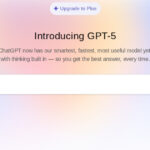Understanding your customer base is fundamental to building a successful business strategy. Every transaction in your analytics dashboard tells a story—but not all customers are created equal. The distinction between new vs. returning customers represents one of the most critical segmentation strategies that can transform how you approach marketing, product development, and revenue growth.
Whether you’re a startup looking to establish market presence or an established business aiming to optimize performance, recognizing these customer segments and their unique characteristics will unlock powerful insights for sustainable growth.
What Are New Customers?
New customers are individuals making their first purchase or engagement with your business. These first-time buyers represent fresh opportunities for customer acquisition and market expansion. They’ve overcome the initial barrier of trust and decided to try your product or service, often after discovering your brand through various marketing channels.
New customers typically exhibit distinct behaviors:
- Higher research time before making purchase decisions
- Greater price sensitivity and comparison shopping
- Increased reliance on reviews and social proof
- Need for more detailed product information and support
- Lower initial order values compared to established customers
The journey to converting prospects into new customers often involves multiple touchpoints across different marketing channels, making customer acquisition costs generally higher for this segment.
What Are Returning Customers?
Returning customers are individuals who have made previous purchases and continue to engage with your brand. These repeat customers have already experienced your products or services and chosen to return, indicating satisfaction and growing trust in your brand.
Returning customers demonstrate different behavioral patterns:
- Faster decision-making processes due to familiarity
- Higher average order values and purchase frequency
- Increased likelihood to try new products or services
- Greater tolerance for minor issues or changes
- More likely to recommend your brand to others
This customer segment represents the foundation of customer retention strategies and often contributes significantly to long-term business sustainability.
Key Differences Between New and Returning Customers
Purchase Behavior
New customers tend to make smaller, more cautious initial purchases while gathering confidence in your brand. They often start with popular or entry-level products to minimize risk. Returning customers, conversely, typically spend more per transaction and show willingness to explore premium offerings or bulk purchases.
Marketing Response
Customer acquisition campaigns targeting new customers require broader reach and educational content to build awareness and trust. Meanwhile, customer retention marketing for returning customers can focus on personalized recommendations, loyalty rewards, and exclusive offers that leverage existing relationships.
Customer Lifetime Value
While new customers represent potential future value, returning customers deliver immediate and measurable customer lifetime value. Studies consistently show that repeat customers generate significantly higher revenue over time, often spending 67% more than new customers after 31 months of engagement.
Support Requirements
New customers typically require more comprehensive support, detailed onboarding, and educational resources. Returning customers often need streamlined support focused on advanced features or account management rather than basic product education.
Benefits of Each Customer Type
New Customer Advantages
- Market Expansion: Each new customer represents entry into potentially untapped market segments
- Revenue Growth: Fresh revenue streams that weren’t previously contributing to your business
- Brand Awareness: New customers often bring organic word-of-mouth marketing opportunities
- Competitive Edge: Successfully acquiring new customers can signal market strength against competitors
Returning Customer Advantages
- Predictable Revenue: Established purchasing patterns create more reliable revenue forecasting
- Lower Marketing Costs: Customer retention typically costs 5-25x less than customer acquisition
- Higher Profitability: Reduced acquisition costs and higher order values improve profit margins
- Brand Advocacy: Satisfied returning customers become powerful referral sources
Strategies for Optimizing Both Customer Segments
New Customer Acquisition Strategies
Educational Content Marketing: Create comprehensive guides, tutorials, and comparison content that addresses common questions and concerns first-time buyers have about your industry or products.
Social Proof Amplification: Leverage customer reviews, testimonials, and case studies prominently across your marketing channels to build trust with prospects.
Risk Reduction Offers: Implement money-back guarantees, free trials, or sample programs that lower the perceived risk for new customers testing your offerings.
Multi-Channel Presence: Maintain visibility across various marketing channels where your target audience discovers new brands, from social media to search engines to industry publications.
Returning Customer Retention Strategies
Personalized Communication: Use purchase history and behavioral data to create tailored marketing messages that resonate with individual customer preferences and needs.
Loyalty Programs: Develop reward systems that recognize and incentive repeat purchases while creating emotional connections to your brand.
Exclusive Access: Offer returning customers early access to new products, special discounts, or premium services that make them feel valued and appreciated.
Proactive Support: Implement customer success programs that anticipate needs and provide solutions before issues arise, strengthening long-term relationships.
Measuring and Tracking Customer Performance
Essential Metrics for New Customers
- Customer Acquisition Cost (CAC): Total marketing spend divided by new customers acquired
- Conversion Rate: Percentage of prospects who become first-time buyers
- Time to First Purchase: Average duration from initial awareness to first transaction
- New Customer Revenue: Total revenue generated by first-time buyers
Key Metrics for Returning Customers
- Customer Retention Rate: Percentage of customers who make repeat purchases within specific timeframes
- Repeat Purchase Rate: Frequency of additional purchases among existing customers
- Average Order Value (AOV): Mean transaction value for returning customer purchases
- Net Promoter Score (NPS): Likelihood of customers recommending your brand to others
Balanced Performance Indicators
Successful businesses monitor both segments simultaneously through metrics like customer lifetime value ratios, retention cohort analysis, and the overall balance between acquisition and retention investments.
Strategic Balance for Sustainable Growth
The most successful businesses understand that new vs. returning customers aren’t competing priorities – they’re complementary forces driving sustainable growth. New customer acquisition fuels market expansion and revenue growth, while returning customer retention ensures profitability and business stability.
The 80/20 principle often applies here: approximately 80% of your revenue may come from 20% of your customers (typically your most loyal returning customers), while new customer acquisition continues expanding that valuable segment.
Smart resource allocation typically involves investing heavily in customer retention while maintaining steady acquisition efforts. This approach maximizes customer lifetime value while ensuring continued market presence and competitive positioning.
Conclusion
Understanding the fundamental differences between new vs. returning customers empowers businesses to create more effective marketing strategies, allocate resources efficiently, and build sustainable growth models. Both customer segments offer unique value propositions that contribute to overall business success when properly understood and nurtured.
The key lies in developing integrated approaches that seamlessly guide new customers through positive first experiences while simultaneously deepening relationships with returning customers. By recognizing these distinct needs and behaviors, you can optimize your marketing spend, improve customer satisfaction, and build a more resilient business foundation.
Ready to optimize your customer strategy? Start by analyzing your current customer segmentation data to identify opportunities for improving both acquisition and retention efforts. Consider implementing specialized campaigns for each segment while tracking performance metrics that matter most to your business goals.
What strategies have you found most effective for balancing new customer acquisition with returning customer retention? Share your experiences with us.
FAQs
What percentage of revenue should come from new vs. returning customers?
While the ideal ratio varies by industry, most successful businesses generate 60-80% of their revenue from returning customers and 20-40% from new customers. This balance ensures sustainable growth while maintaining profitability, as returning customers typically have lower acquisition costs and higher lifetime value.
How much should I spend on acquiring new customers versus retaining existing ones?
Customer retention typically costs 5-25 times less than customer acquisition, so most businesses should allocate 70-80% of their marketing budget to retention strategies. However, maintaining a steady 20-30% investment in new customer acquisition is essential for long-term growth and market expansion.
What’s the average time it takes to convert a new customer into a returning customer?
The conversion timeline varies significantly by industry, but most businesses see repeat purchases within 30-90 days of the initial transaction. E-commerce companies often see faster cycles (2-4 weeks), while service-based businesses may require 3-6 months to establish returning customer relationships.
Do returning customers really spend more than new customers?
Yes, returning customers typically spend 67% more than new customers and have 50% higher average order values. They also purchase more frequently, try additional products, and are less price-sensitive, making them significantly more valuable to your bottom line over time.
Which customer acquisition channels work best for converting new customers into returning ones?
Email marketing, social media engagement, and referral programs show the highest conversion rates for turning new customers into repeat buyers. Customers acquired through word-of-mouth referrals have particularly high retention rates, with 92% making additional purchases within the first year.






